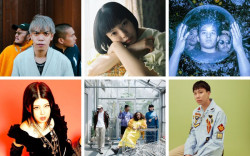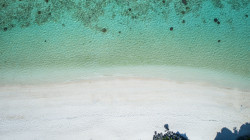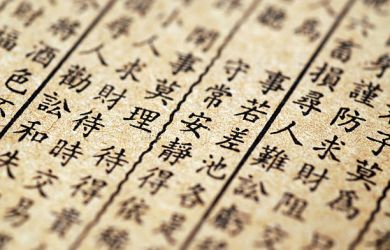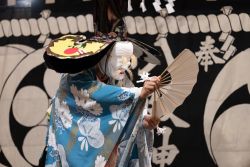
December 25, 2008
Turning Japanese
Get your new year off to a crafty start by learning a traditional hobby
By Metropolis
Originally published on metropolis.co.jp on December 2008
New Years’ resolutions often involve quitting something, but for those who want to add to their list of hobbies rather than subtract, we present a roundup of ten Japanese arts, crafts and traditions that offer English lessons in Tokyo. These classes are taught by experts, whether that be sipping sake, playing the shamisen or preparing that perfect sushi roll. Feel free to dabble, or go ahead and jump right in.
 Looking to save some cash, eat healthier and learn a bit about Japanese culture in the process? There’s no better way to kill three tori with one ishi than by enrolling in a cooking class. Thankfully, Tokyo has several outstanding teachers offering instruction in English.
Looking to save some cash, eat healthier and learn a bit about Japanese culture in the process? There’s no better way to kill three tori with one ishi than by enrolling in a cooking class. Thankfully, Tokyo has several outstanding teachers offering instruction in English.
Elizabeth Andoh is a writer, lecturer and business consultant specializing in Japanese food and culture. A former long-time contributor to The New York Times and Gourmet magazine, Andoh (left) now offers a variety of culinary-related programs through her school, A Taste of Culture. Themed classes (¥7,500/person) are conducted in English at her home near Futako-Tamagawa, and upcoming programs include workshops on sushi-rolling, cooking fish and making hanami picnic lunches. Beginning in January, A Taste of Culture welcomes two guest instructors: Metropolis food writer Yukari Pratt Sakamoto and Melinda Joe, author of the sake-centric blog “Tokyo through the Drinking Glass.” Sakamoto will be leading market tours of foodie-friendly spots around town (¥5,500/person), while Joe will offer tasting seminars that pair nihonshu with washoku (¥6,500/person). See www.tasteofculture.com or email andoh@tasteofculture.com for more
information.
After taking time off to become a mom, Miyuki Horiike has restarted her cooking classes at the Tokyo American Club and Tokyo Union Church. “Mickey” studied the culinary arts at Le Cordon Bleu London, and first started teaching in New York in 2001. She incorporates foreign ingredients into her Japanese fusion dishes, emphasizing seasonal vegetables and fruit. Participants receive a recipe book after each class. ¥6,000 per class. Email mickeycooks@aol.com for more information.
Trained in French, Japanese and Chinese cooking techniques, Kyoko Hattori specializes in simplifying Japanese cuisine so that men, women and even children can prepare meals with confidence. She holds lessons at her home in Gakugei-Daigaku, and also leads tours of Tokyo neighborhoods like plastic food mecca Kappabashi. ¥5,000 per class. Call 090-8961-6216 or 03-3715-7196 for more information.
 Tokyo station is more than just a symbol of the city and a transportation hub. It also houses a hotel, a shopping mall—and Kyoto Kan, an information center, crafts gallery and event space promoting travel to Japan’s former capital. On January 12 and February 2 from 1:30-3:30pm, the center will offer shodo classes just for men. On February 3, another class will be taught that’s open to all. If you’re interested in this classic and very Japanese art, don’t miss your chance to sign up now: from March, Kyoto Kan will cease to offer calligraphy instruction. Classes are ¥3,000 and limited to ten students. Call 03-5204-2260 (open daily 10:30am-7:30pm) for more information and to book. www.kyotokan.jp/seminar
Tokyo station is more than just a symbol of the city and a transportation hub. It also houses a hotel, a shopping mall—and Kyoto Kan, an information center, crafts gallery and event space promoting travel to Japan’s former capital. On January 12 and February 2 from 1:30-3:30pm, the center will offer shodo classes just for men. On February 3, another class will be taught that’s open to all. If you’re interested in this classic and very Japanese art, don’t miss your chance to sign up now: from March, Kyoto Kan will cease to offer calligraphy instruction. Classes are ¥3,000 and limited to ten students. Call 03-5204-2260 (open daily 10:30am-7:30pm) for more information and to book. www.kyotokan.jp/seminar
For a more personalized experience, take a lesson from a true master. Kihachiro Nishiura, founder of the Nishiura style that blends traditional and modern approaches to calligraphy, offers private instruction in English and Japanese at Nishiura Ryokusui Do, his antiques store in Minami-Aoyama. ¥3,000 per class. Email info@nishiura.co.jp for more information or to arrange a lesson. www.nishiura.co.jp
If you don’t mind feeling like a tourist, HIS Experience Japan runs calligraphy classes in Sendagaya under the banner of The World of Japanese. Lessons are available Tuesdays (12:45-3:15pm) and Thursdays (4:45-7:15pm), and class size is limited to a dozen people, so personalized instruction from the shodo sensei is maximized. ¥9,800/¥8,800 (children). Call 03-5322-8988 (open daily 10am-6:30pm) for more information and to book. www.hisexperience.jp
 Kyudo master Masao Iijima offers free instruction in English at the Fukagawa Sports Center in Monzen-Nakacho on Mondays and Thursdays from 1-5pm. Equipment rental is included in the small gym entry fee. If you’re interested in taking lessons at different times, Iijima can arrange introductions at several private dojos around Tokyo, including one operated by equipment shop Asahi Archery (www.asahi-archery.co.jp; 03-3986-2301) in Otsuka. Free lessons, ¥350 gym entry fee. Contact Masao Iijima at 03-3646-8127. Fukagawa Sports Center: 1-2-18 Etchujima, Koto-ku. Tel: 03-3820-5881.
Kyudo master Masao Iijima offers free instruction in English at the Fukagawa Sports Center in Monzen-Nakacho on Mondays and Thursdays from 1-5pm. Equipment rental is included in the small gym entry fee. If you’re interested in taking lessons at different times, Iijima can arrange introductions at several private dojos around Tokyo, including one operated by equipment shop Asahi Archery (www.asahi-archery.co.jp; 03-3986-2301) in Otsuka. Free lessons, ¥350 gym entry fee. Contact Masao Iijima at 03-3646-8127. Fukagawa Sports Center: 1-2-18 Etchujima, Koto-ku. Tel: 03-3820-5881.
Once you’ve got the basics down, the Kyudo Center of Komazawa Olympic Park offers seven 28m kyudo shooting lanes, changing rooms and free showers. The staff maintains a list of local instructors looking for students. ¥315 first hour, ¥170 additional hours. Tel: 03-3421-6199. www.tef.or.jp/kopgp/guide/kyudo.html
 More than simple flower arranging, ikebana is an art form that places as much importance on empty space as the blooms themselves. When the Ohara School was founded in 1912, its new ideas helped to create modern ikebana. Today the institute, which is located in the heart of Aoyama, continues to promote ikebana by offering English-language classes for all levels. In the beginner’s class, students learn the basics of hana-isho, a decorative style that can be displayed in a home or office. Beginner’s course: ¥2,500 per class, plus materials fee. One-time trial: ¥4,000 (materials included). Classes Wed (10am-noon) and Thu (10am-noon, 1:30-3:30pm). Call 03-5774-5097 or email international@ohararyu.or.jp to make reservations (required). www.ohararyu.or.jp/english
More than simple flower arranging, ikebana is an art form that places as much importance on empty space as the blooms themselves. When the Ohara School was founded in 1912, its new ideas helped to create modern ikebana. Today the institute, which is located in the heart of Aoyama, continues to promote ikebana by offering English-language classes for all levels. In the beginner’s class, students learn the basics of hana-isho, a decorative style that can be displayed in a home or office. Beginner’s course: ¥2,500 per class, plus materials fee. One-time trial: ¥4,000 (materials included). Classes Wed (10am-noon) and Thu (10am-noon, 1:30-3:30pm). Call 03-5774-5097 or email international@ohararyu.or.jp to make reservations (required). www.ohararyu.or.jp/english
The Sogetsu School in Akasaka is devoted to pushing the boundaries of ikebana to create an art form that can be enjoyed “anywhere, at any time, by anyone, using any kind of material.” The International Class is a weekly English-language course geared toward English-speakers at all levels. And since there are Sogetsu branches all over the world, students can continue their ikebana studies even after leaving Japan. ¥3,800 per class (materials included). Classes Mon (except hols) 10am-2pm. Call 03-3408-1151 or email kyoshitsu@sogetsu.or.jp for details. www.sogetsu.or.jp/english
 Masters of traditional musical instruments like the shamisen are increasingly rare, so seeking out one who’s willing and able to teach students can be a challenge. That’s why Makoto Nishimura, a graduate of Tokyo Fine Arts University who offers classes in English, is such a find. Devoted to keeping alive the tradition of nagauta, a style of music featuring the shamisen with deep roots in kabuki, Nishimura also offers flute and drum lessons and organizes periodic recitals for her students. ¥1,500-¥2,500 per class. Call 03-3412-6096 or email nagautashamisen@yahoo.co.jp to reserve.
Masters of traditional musical instruments like the shamisen are increasingly rare, so seeking out one who’s willing and able to teach students can be a challenge. That’s why Makoto Nishimura, a graduate of Tokyo Fine Arts University who offers classes in English, is such a find. Devoted to keeping alive the tradition of nagauta, a style of music featuring the shamisen with deep roots in kabuki, Nishimura also offers flute and drum lessons and organizes periodic recitals for her students. ¥1,500-¥2,500 per class. Call 03-3412-6096 or email nagautashamisen@yahoo.co.jp to reserve.
 In contrast to other martial arts, aikido focuses on defensive maneuvers by teaching students to absorb the momentum of an opponent’s attack and use it to throw them to the ground. The “Senshusei” course at the Yoshinkan Honbu Dojo in Shinjuku is an intensive program that lasts 11 months (typically April-March) and involves training alongside the Tokyo Riot Police. There is also a less-intense International Class, taught by Senshusei graduates. ¥10,500/month (univ). ¥12,600/month (adults). Classes Tue-Fri 8:30-9:30am, Sat 11:30am-12:30pm. Senshusei course: ¥31,500/month. Call 03-3368-5556 for details. www.yoshinkan.net
In contrast to other martial arts, aikido focuses on defensive maneuvers by teaching students to absorb the momentum of an opponent’s attack and use it to throw them to the ground. The “Senshusei” course at the Yoshinkan Honbu Dojo in Shinjuku is an intensive program that lasts 11 months (typically April-March) and involves training alongside the Tokyo Riot Police. There is also a less-intense International Class, taught by Senshusei graduates. ¥10,500/month (univ). ¥12,600/month (adults). Classes Tue-Fri 8:30-9:30am, Sat 11:30am-12:30pm. Senshusei course: ¥31,500/month. Call 03-3368-5556 for details. www.yoshinkan.net
Another option for aspiring aikidoka is Yoshinkan Honbu’s sister dojo in Roppongi, which offers both beginner and regular classes within the Body Plant fitness complex. The two instructors are both native English speakers who received their high-level black belts at the Honbu Dojo. ¥2,000/class (visitors), ¥10,000/month (Body Plant members). Classes Tue & Thu 7-8am, Fri 7-8:30pm, Sat 6:15-7:45pm. www.roppongi-yoshinkan.com
 One of the most enduring images of Japanese culture is kneeling on tatami mats and sipping matcha. But there is more to this teatime ritual than meets the eye. ABC Cooking Studio Plus International, which provides all manner of culinary instruction in the Tokyo Midtown complex, offers a tutorial called the Enjoy Quick Tea Ceremony. No reservations are necessary, so simply drop by and pay a token lesson fee, then head to a tatami room and learn to make your own matcha. An English instruction book is provided afterward so you can hone your technique at home. ¥300 per class. Tel: 03-5413-3476. See www.abc-cooking.co.jp for the 2009 schedule.
One of the most enduring images of Japanese culture is kneeling on tatami mats and sipping matcha. But there is more to this teatime ritual than meets the eye. ABC Cooking Studio Plus International, which provides all manner of culinary instruction in the Tokyo Midtown complex, offers a tutorial called the Enjoy Quick Tea Ceremony. No reservations are necessary, so simply drop by and pay a token lesson fee, then head to a tatami room and learn to make your own matcha. An English instruction book is provided afterward so you can hone your technique at home. ¥300 per class. Tel: 03-5413-3476. See www.abc-cooking.co.jp for the 2009 schedule.
The International Chado Culture Foundation is dedicated to promoting the joys of tea ceremony, offering lessons in English twice a week in Ichigaya. Sessions run April to September and October to March, though participants can join any time. ¥5,000 for a trial class (or ¥1,000 for foreign exchange students). Email iccf@basil.ocn.ne.jp for details. www.chado.or.jp
 Massage salons the world over now offer shiatsu, but living in Japan offers the opportunity to learn from true masters. The shiatsu style of massage involves applying pressure to certain body points (tsubo), in order to treat both physical and mental discomfort. At Shinjuku’s Kimura Shiatsu Institute, Susumu Kimura (above), a licensed practitioner with 25 years of experience, offers hands-on instruction in English. The basic and intermediate courses include 12 lessons, and the schedule is flexible—you’re free to choose the days and times that work best. More intensive courses, introductory lessons, group discounts and meditation classes are all also available. Classes start at ¥5,000. Call 03-3485-4515 or email cosmo@shiatsu-k.com for more information. www.shiatsu-k.com/english
Massage salons the world over now offer shiatsu, but living in Japan offers the opportunity to learn from true masters. The shiatsu style of massage involves applying pressure to certain body points (tsubo), in order to treat both physical and mental discomfort. At Shinjuku’s Kimura Shiatsu Institute, Susumu Kimura (above), a licensed practitioner with 25 years of experience, offers hands-on instruction in English. The basic and intermediate courses include 12 lessons, and the schedule is flexible—you’re free to choose the days and times that work best. More intensive courses, introductory lessons, group discounts and meditation classes are all also available. Classes start at ¥5,000. Call 03-3485-4515 or email cosmo@shiatsu-k.com for more information. www.shiatsu-k.com/english
 Enjoy Metropolis’ sake columns? Learn from the master with a tasting event led by columnist John Gauntner. One of the world’s foremost authorities on sake, Gauntner is the only non-Japanese member of the Ginjo Sake Research Group and a three-time winner of the Kikizake Meijin taster award. His monthly English seminars fill up quick, so keep an eye on his website to make sure you don’t miss out. Email sakeguy@gol.com or see www.sake-world.com for details.
Enjoy Metropolis’ sake columns? Learn from the master with a tasting event led by columnist John Gauntner. One of the world’s foremost authorities on sake, Gauntner is the only non-Japanese member of the Ginjo Sake Research Group and a three-time winner of the Kikizake Meijin taster award. His monthly English seminars fill up quick, so keep an eye on his website to make sure you don’t miss out. Email sakeguy@gol.com or see www.sake-world.com for details.
If you’re unable to book a spot at The Sake Guy’s seminars, you can always check out the massive Nihonshu Fair, which takes place every June at Ikebukuro Sunshine City Hall. The event, organized by the Japan Sake Brewers Association, features brewers and connoisseurs getting together to enjoy some sake-fueled networking. Over 500 varieties of nihonshu are available for purchase. www.japansake.or.jp
 You’re in Japan, so put down the Guitar Hero—it’s time to learn a new string instrument. The koto originated in China and skyrocketed to popularity in Japan in the Edo period. There are two basic playing styles—known as Yamada and Ikuta—and both can be studied at Reisenkai, a school specializing in traditional Japanese arts located behind Omotesando Hills that offers one-on-one lessons in a tatami room, which you can’t enter without pristine white socks. ¥3,980 for trial lesson. Call 03-3423-7600 or email reisen@f01.itscom.net for details. www.reisenkai.jp
You’re in Japan, so put down the Guitar Hero—it’s time to learn a new string instrument. The koto originated in China and skyrocketed to popularity in Japan in the Edo period. There are two basic playing styles—known as Yamada and Ikuta—and both can be studied at Reisenkai, a school specializing in traditional Japanese arts located behind Omotesando Hills that offers one-on-one lessons in a tatami room, which you can’t enter without pristine white socks. ¥3,980 for trial lesson. Call 03-3423-7600 or email reisen@f01.itscom.net for details. www.reisenkai.jp








